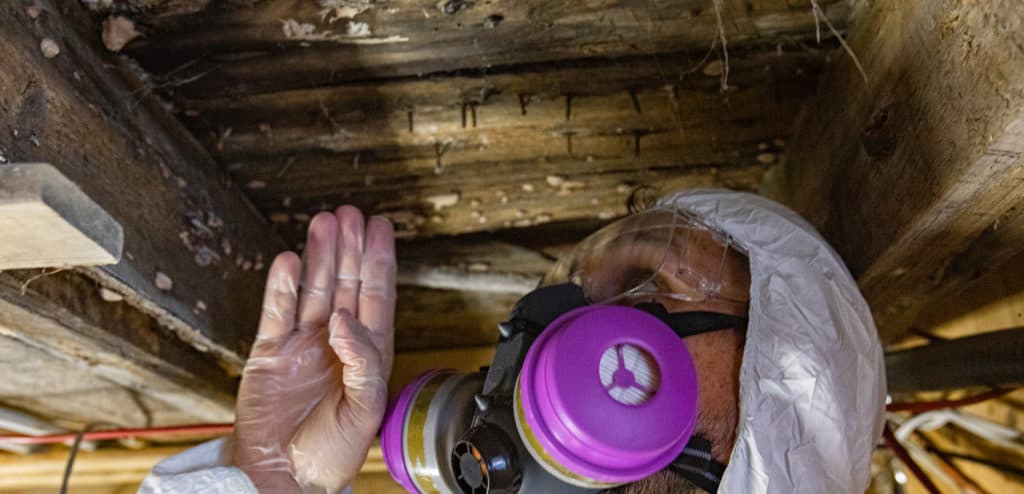Protect your buyer’s investment with a proper inspection
Any house that’s being bought, sold, or refinanced in Tennessee must be inspected for Wood Destroying Insects (WDI) such as termites and beetles. Banks require a clear WDI inspection report before funds will be transferred.
Ark Pest Control & Prevention Inspectors offer this service. We examine the inside of the home, the crawl spaces and exterior, and sometimes the attic if it’s accessible. Our technicians inspect for termites and beetles as well as conditions that are favorable for wood destroying insects, such as moisture from plumbing and roof leaks.
When our inspection is complete, we prepare your inspection report and note whether or not wood destroying insects were found as well as any damage that we observed. The written report is usually available within two to three business days.
If we find WDI, the report is sent to the real estate agent who then informs their client (whether it be the buyer or seller) to tell them the cost of treatment. The real estate agent determines who will pay for the treatment. Once the treatment is complete, the property is reinspected and a ‘termite letter’ is issued on the property. This allows for the sale or refinance to close.
The new homeowner at that point has the option to inherit the Ark Pest Control & Prevention warranty on the WDI treatment. The warranty includes a once yearly inspection. If the WDIs return, an Ark technician will return at no charge to retreat the property.
Our inspections are good for 30 days from the date of the final report. If a closing is not completed within 30 days, a new inspection will be required.

Glossary of terms
Subterranean Termites: Ground-dwelling species. They invade the wood via mud shelter tubes. Subterranean termites and eliminated using a localized chemical treatment of the infested soil.
Fungus and Dryrot: It’s not just insects that destroy wood. Insects feast on cellulose that is moist. Moisture in wood can cause a wood decaying fungus that must be removed and the excessive moisture condition corrected. Dryrot, not to be confused with fungus, is what’s left of wood after a long term infection by wood decaying fungus.
Beetles: The only wood destroying beetles, True Powder Post, False Powder Post and some species of bores, are treated similarly to termites.
Carpenter Ants: These ants are carpenters in that they build galleries out of wood for their nests. This can weaken the wood members causing structural failure.
Earth to Wood Contacts: If wood has prolonged contact with moisture in the soil, termites infestations and fungus infections are likely to happen.
Faulty Grade Levels: When the exterior soil grades are even with or above the concrete foundation, this can lead to concealed infestations of subterranean termites or fungus.
Cellulose Debris: This is any type of wood product such as construction wood debris, cardboard, paper, etc., in the crawl space. These materials should be removed to reduce the chances of WDI infestation.
Excessive Moisture Condition: Plumbing leaks such as in a mortar pan stall shower, too much water in the subarea soil, inadequate ventilation, etc. can cause excessive moisture conditions which is conducive to infestation.
The final report
Important Consumer Information Regarding
the Scope and Limitations of the Inspection
Though Ark cannot determine the cost of repair, we will thoroughly review and list any issues that we find. Our visual inspection includes readily accessible areas of the structure(s). No inspection will be made in areas that required the breaking apart or into, dismantling, removal of any object like moldings, floor coverings, wall coverings, siding, fixed ceilings, insulation, furniture, appliances, and/or personal possessions. Crawl spaces, attics, and/or other areas may be deemed inaccessible if the opening to the area is not large enough to provide physical access for the inspector or if a ladder was required for access. Your inspector will indicate areas that were not accessible. If any area which has been reported as inaccessible is made accessible, the inspection company may be contacted for another inspection. An additional fee may apply.
We look for visual evidence of wood destroying insects. termites, carpenter ants, carpenter bees, and re-infesting wood boring beetles. This inspection does not include mold, mildew or noninsect wood destroying organisms. Unfortunately, wood destroying insect infestation and/or damage may exist in concealed or inaccessible areas, so any area that was not accessible could actually harbor damage or insects. If a closing is not completed within ninety (90) days from the date of inspection, the property must be reinspected.
You should know that FHA and VA require treatment when any active infestation of subterranean termites is found. If signs of subterranean termites — but no activity — are found in a structure that shows no evidence of having been treated for subterranean termites in the past, then a treatment should be recommended. A treatment may also be recommended for a previously treated structure showing evidence of subterranean termites — but no activity — if there is no documentation of a liquid treatment by a licensed pest control company within the previous five years unless the structure is presently under warranty or covered by a service agreement with a licensed pest control company.
Any structure can be attacked by wood destroying insects. Homeowners should be aware of and try to eliminate conditions which promote insect infestation in and around their structure(s) such as earth to wood contact, foam insulation at foundation in contact with soil, faulty grade, improper drainage, firewood against structure(s), insufficient ventilation, moisture, wood debris in crawl space, wood mulch or ground cover in contact with the structure, tree branches touching structure(s), landscape timbers and wood decay. Should these or other conditions exist, corrective measures should be taken in order to reduce the chances of infestation of wood destroying insects and the need for treatment.